March is considered to be one of the most special month for women, it is because it is celebrated as the International Women’s Month.
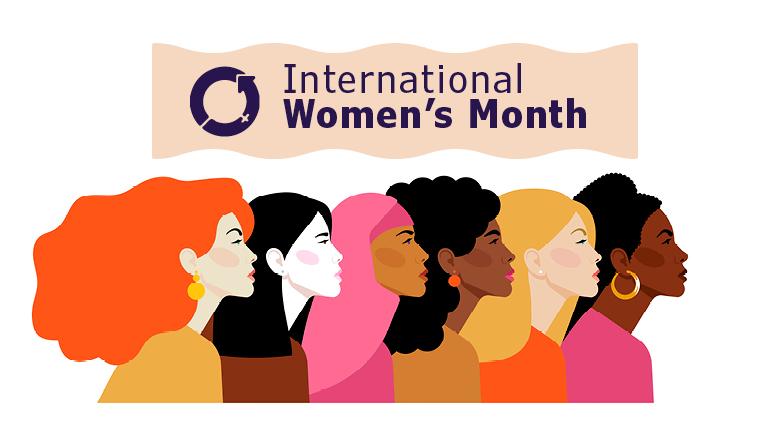
Today’s feature is mostly about particular names in history, the brave and graceful Filipina Women who fought the oppressors during their times.
Let’s travel back and get to know how they stand still for our beloved country and be an inspiration for us to have the freedom that we have right now.

First on the list is Gabriela Silang, born on March 19, 1731, a widow to one of the Philippines hero who died during the Spanish occupation. She was from Ilocos Sur. She leads the Spanish revolution when her husband died because of his friend who turn their back and sold his life for a bigger amount of money to the friars.
Gabriela was known to be a strong woman, Spanish was threatened of her existence. She is known to be skilled in riding a horse during battles. On September 10, 1763, Silang attempted to besiege Vigan but the Spanish retaliated, forcing her into hiding. She retreated once more to Abra, where the Spanish later captured her. On September 20, 1763, Silang and her troops were executed by hanging in Vigan’s central plaza.

Second, is mostly known as the mother of our national hero, Jose Rizal. Teodora Alonzo was on November 9, 1927 at Sta. Cruz Manila. She had 11 children with Francisco Mercado. Teodora was known to be a disciplinarian. At the early age of her children, she already taught them lessons way ahead of their age. His son, Jose was already a good reader at 3 years old, he considers his mother as his first teacher.
Teodora has been the face of strong willed woman. She had been arrested 2 times in Biñan, Laguna. First because of the accusation of her sister-in-law, that Teodora is poisoning her, second is when she forgot to use her Spanish last name in a document she signed. She was sentenced to walked 50 kilometers from Calamba to the provincial jail in Santa Cruz.
In a letter to Governor-General Camilo Polavieja dated 28 December 1896, Teodora Alonso petitions for the pardon of her son Jose Rizal from the death penalty meted upon him by the Council of War for the crime of rebellion against Spain. She died on August 16, 1911 at her home in San Nicolas, Manila.
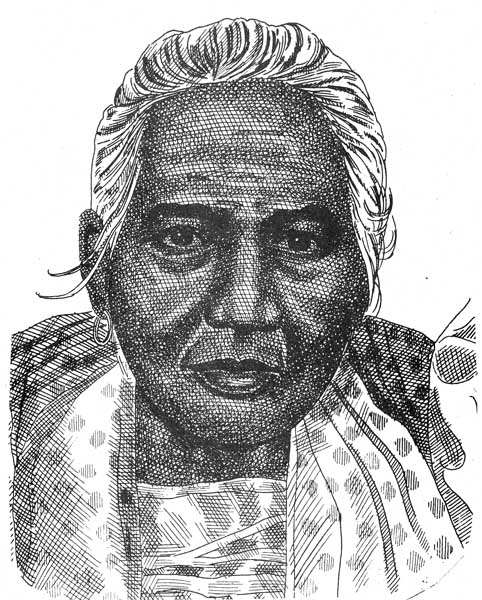
Third was known as Tandang Sora, Melchora Aquino was born on January 6, 1812. She was hailed from a rich family in in Barrio Banlat, Caloocan (the present-day Barangay Tandang Sora, Quezon City). She was married a cabeza de barrio (village chief), and bore six children.
In her native town, Tandang Sora operated a store, which became a refuge for the sick and wounded revolutionaries. She fed, gave medical attention to and encouraged the revolutionaries with motherly advice and prayers. She is not an official member of Katipunan, but her son, Juan is. Secret meetings of Katipuneros was also held at her house in Balintawak. She and her son was one of those who teared their cedulas.
She was arrested when the the Katipunan was accidentally revealed to a Spanist priest. She was jailed and was thrown to Guam. She came back on the country during American occupation and on February 19, 1911, at the age of 107, Tandang Sora died.
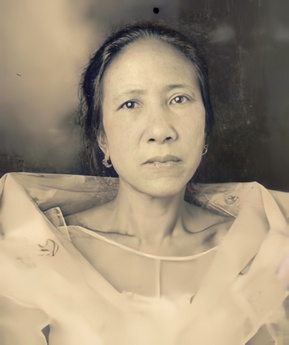
Fourth is another widow who also leads the Spanish revolution during his husband death. Gregoria De Jesus, born on May 9, 1875 in Caloocan was the wife of Katipunan founder, Andres Bonifacio. They got married on 1893 but before it, she joined the Katipunan as the Muse or Lakambini.
They had a traditional religious wedding at the Binondo Church, followed a week later by a ceremony according to the Katipunan’s rites, as the society’s members did not approve of their marriage in the Catholic Church, which was seen as an oppressive colonial force, they had 1 child but later on died of smallpox .
Also known by her nickname Oriang, was the founder and vice president of the women’s chapter of the Katipunan. She was also the custodian of the documents and seal of the Katipunan. When her husband was killed, she almost lose hope on finding his body, she became close to another Katipunan member, Julio Nakpil, whom she married on 1898. They had 6 children. She died during the Japanese occupation in 1943.

Fifth, is a Filipino Civic Leader, Social Worker and World War II heroin. Josefa Llanes Escoda was born on September 20, 1898 in Ilocos Norte. She is most known for campaigning for women’s suffrage and as a founder[of the Girl Scouts of the Philippines in 1940. She also became a social worker for the Philippine Chapter of the American Red Cross.
During World War II, Japanese forces invaded the Philippines. By 1944, news of the underground activities of Josefa Llanes Escoda and her husband Antonio had spread. As the Japanese pushed deeper in the country, the couple had intensified their activities of supplying medicine, food, clothes and messages to both Filipino war prisoners and American internees in concentration camps. Antonio was first arrested in June 1944, and Josefa Llanes Escoda was also arrested two months later on August1944. She was imprisoned in Fort Santiago, the same prison as her husband, who was executed in 1944 along with General Vicente Lim, who was imprisoned with him.
On January 6, 1945, Josefa Llanes Escoda was then taken and held in one of the buildings of Far Eastern University occupied by the Japanese. She was last seen alive on January 6, 1945, severely beaten and weak, and was transferred into a Japanese transport truck. It is presumed that she was executed and buried in an unmarked grave, either in the La Loma Cemetery or Manila Chinese Cemetery, which Japanese forces used as execution and burial grounds for thousands of Filipinos who resisted the Japanese occupation.

Aurora Quezon was born in Baler, Nueva Ecija (at that time, Baler was the capital of Nueva Ecija) on February 19, 1888 was the wife of Philippine President Manuel Luis Quezon and the First Lady of the Philippines from 1935 to 1944. Within the first seventeen years of the marriage, Manuel Quezon emerged as a dominant figure in Philippine politics. He became the First President of the Commonwealth. Aurora involved herself with women’s organizations such as the National Federation of Women’s Clubs, of which she was the honorary chairperson.
The Quezons were the first presidential couple to reside in Malacañan Palace, but she spent as little time as possible there, preferring to stay in a “nipa house” in Malacañang Park or in her farm, Kaleidan, in Arayat, Pampanga. She was an active First Lady, engaging herself in the campaign to give Filipino women the right of suffrage, which was achieved in 1937. She was particularly involved in managing the family’s Arayat farm to demonstrate how social justice could be applied to landlord-tenant relationships in an agrarian setting. She was involved in the Girl Scouts of the Philippines and the Associación de Damas Filipinas, a noted orphanage in Manila.
She was also the honorary president of another orphanage, the White Cross, located in San Juan. During the Japanese occupation, the family stayed in Corregidor. They later flew in Australia then US in 1942. In 1944, President Quezon died in Saranac New York. She then moved to California to await their return to the Philippines. She and her daughters volunteered as nurses for the Red Cross.She continued to be involved in civic work, such as the efforts to rebuild the Antipolo Church. She received honorary doctorates from the University of Santo Tomas, and from the University of Michigan at Ann Arbor. She was likewise bestowed the Ozanam Award from the Ateneo University. Together with her daughter Baby, she died in an ambush said to be planned by HUK (Hukbalahap) on April 28, 1949 in Baler, Quezon which was named to after her husband.
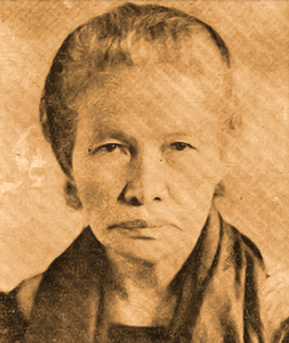
Known as the “Visayan Joan of Arc” Teresa Magbanua y Ferraris was born on October 13, 1868 in Pototan, Iloilo. When the 1896 Philippine Revolution against Spain broke out, she became one of only a few women to join the Panay-based Visayan arm of the Katipunan, the initially secret revolutionary society headed by Andrés Bonifacio.
Despite opposition from her husband, Magbanua followed her two younger brothers and took up arms against the Spaniards, leading troops into combat and winning several battles under the command of General Martin Delgado. Magbanua is credited as the only woman to lead troops in the Visayan area during the Revolution. Shortly thereafter, Magbanua shifted to fighting American colonial forces during the Philippine–American War. She is one of the few Filipinos to have participated in all three resistance movements against the three major colonizers: Spain (in the Philippine Revolution), the United States (in the Philippine–American War), and Japan (in World War II).
Deaths of her brothers dealt a blow to Magbanua. She began using guerrilla tactics after the Filipino forces’ regional headquarters in Santa Barbara fell to the Americans. She surrendered her troops to the American forces in 1900 and returned to farming.
While not an active fighter during World War II, Magbanua did what she could to resist Japanese forces during the Japanese occupation of the Philippines. She sold her personal belongings to purchase food and supplies, which she would then give to the local guerrillas. Shortly after the outbreak of the war, she also sold her property in Iloilo to help finance the guerrillas.
She never remarried after her husband’s death, and their marriage produced no children. Magbanua died on an unknown date in August 1947. Her burial was attended only by her close friends; there were no announcements made of her death at the time.
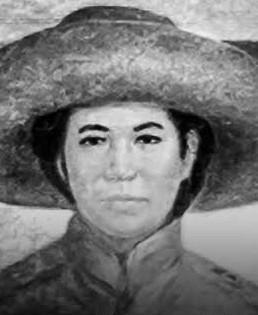
Trinidad Tecson was born on November 18, 1848, known as the “Mother of Biak-na-Bato” and “Mother of Mercy”, fought to gain Philippines independence during Spanish Occupation.
She was given the title “Mother of Biak-na-Bato” by Gen. Emilio Aguinaldo. She was also cited as the “Mother of the Philippine National Red Cross” for her service to her fellow Katipuneros. Tecson was born in San Miguel de Mayumo, Bulacan. She joined the revolutionary forces led by Gen. Gregorio del Pilar and participated in the assault on the province of Bulacan. She also served in the Malolos Republic and was designated as the Commissary of War.
During the American drive northward, she was in Cabanatuan. Bringing with her sick and wounded revolutionaries, Tecson crossed the Zambales mountains to Santa Cruz then to Iba.
She remarried three times after his first husband died. She died on January 28, 1928, in Philippine General Hospital at the age of 79. Her remains lie in the Plot of the Veterans of the Revolution in Cementerio del Norte now known as Manila North Cemertery.
These women was not only died for our country, but they also lived with integrity and honor. They showed why is it not a hindrance to be a woman to do the job that mostly known only for men. They are not just shadows of their husbands, but also an inspiration for the next generations. They lived their life the fullest and served their country at the same time. Women are not just for household, these women showed how it is to lived foe what they loved, and what they advocates. They are willing to die and gave their life, not to be known, but to be a reminder, that woman exist in each and every history of our country and lives.
Again, Happy International Women’s Month. #AbanteBabae
Note: Most articles credited to Wikipedia







